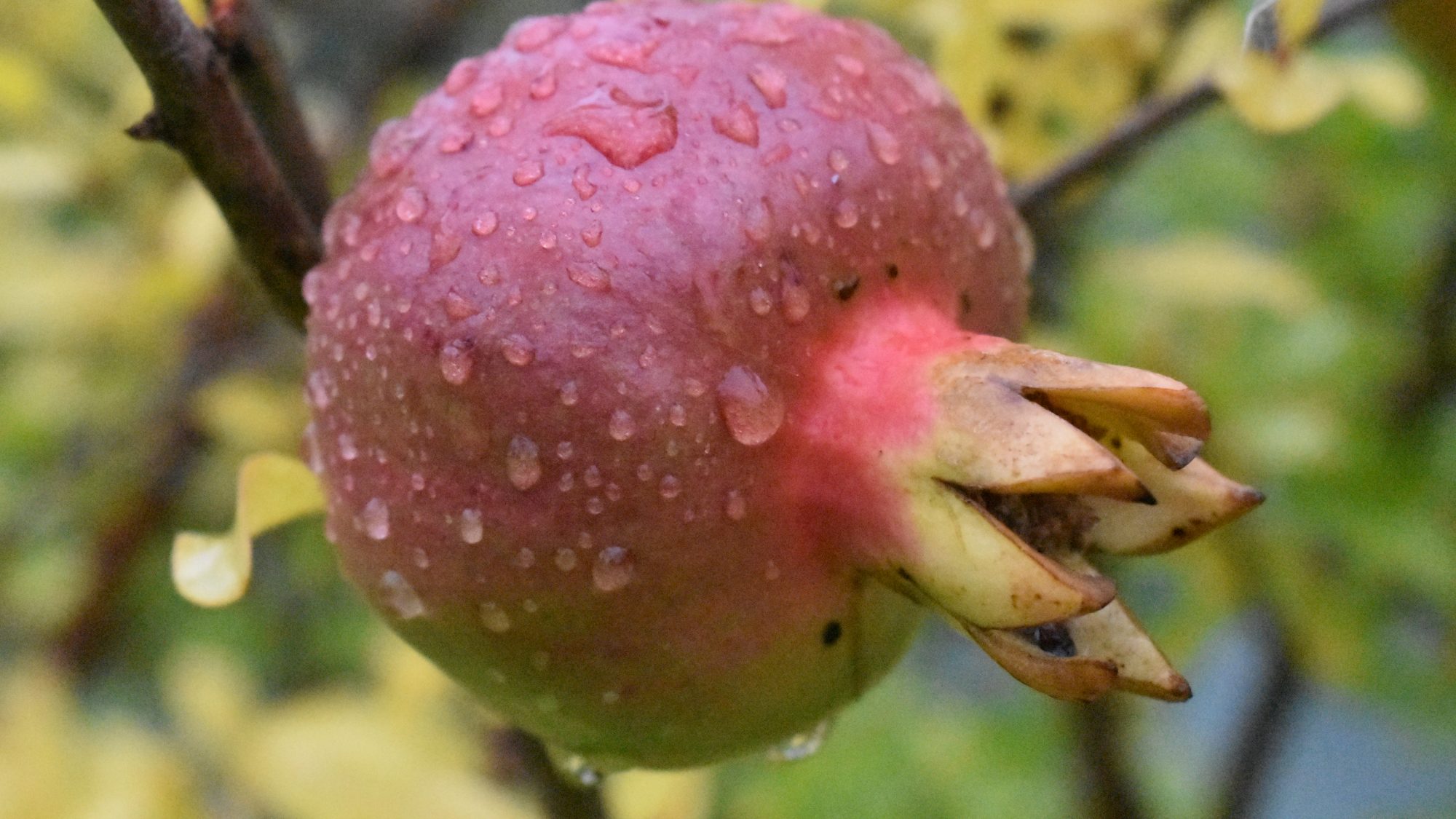The fruits of this species are worth admiring in the Glasshouse Bays.
A member of the loosestrife family the pomegranate (Punica granatum) is one of only two species of deciduous shrubs, both bearing narrow leaves. P. granatum is naturally distributed from south east Europe and south west Asia to Yemen. Though it has attractive flowers it is best known for its fruits, or pomegranates. It can reach up to 6m in height and spread, has glossy foliage and produces funnel-shaped, five-petalled flowers of brilliant orange-red. It will grow in a warm, sunny position, and has thrived in the hot, dry summer of 2025, producing fruits. These have a leathery outer, and contain numerous juicy arils, which hold the seeds. The fruit is favoured for its high fibre, vitamin and mineral content. The ancient Greeks believed that this plant arose from the blood of Adonis. The common name pomegranate is derived from the Latin pomum (apple) and granatum (seeded).

